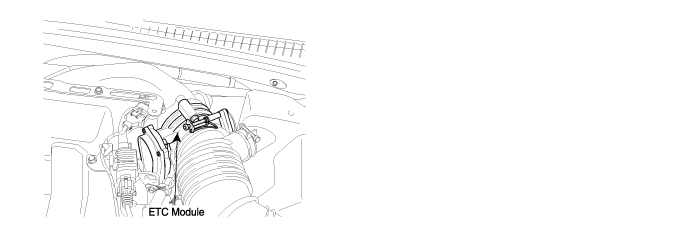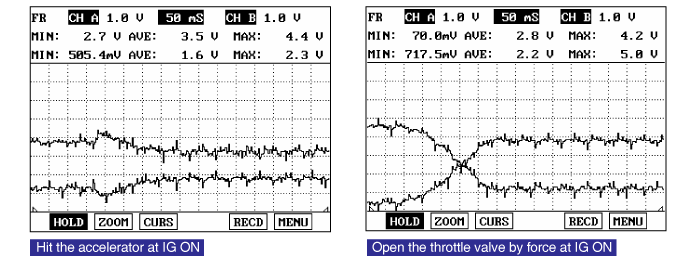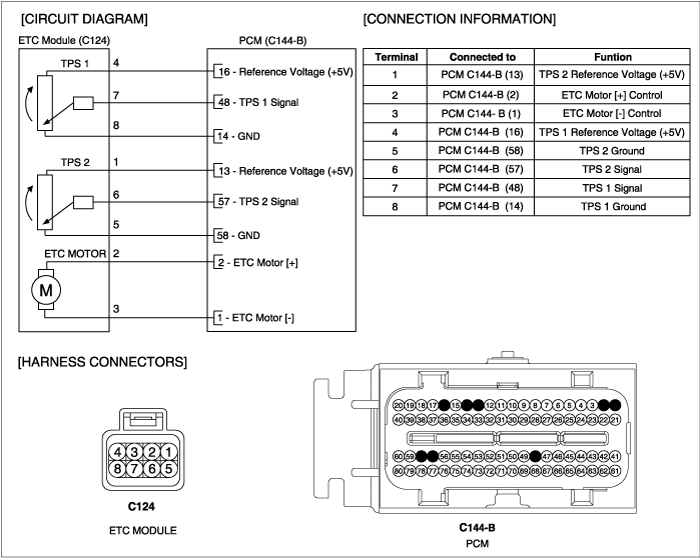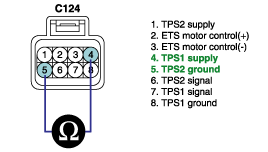Monitor "TPS1" item on the service data.
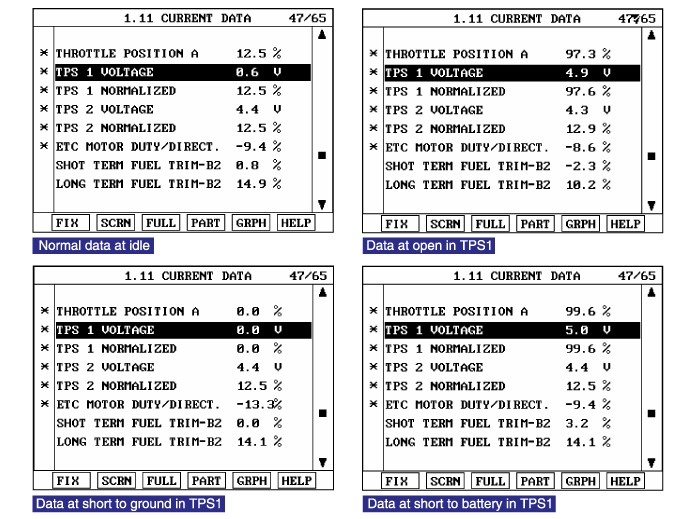
Procedure of ETS Initialization
Erase the trouble codes on PCM
Turn the ignition key off and keep this condition until the main relay is turned off.(It will takes 10 second)
Turn ignition key on more than 1second to record the throttle motor position on the EEPROM
